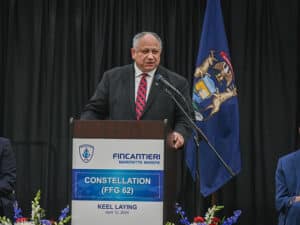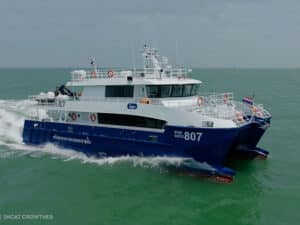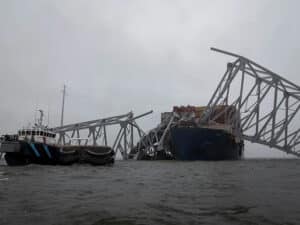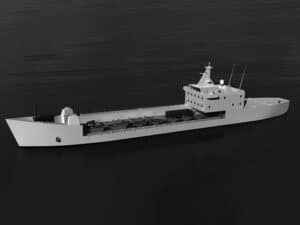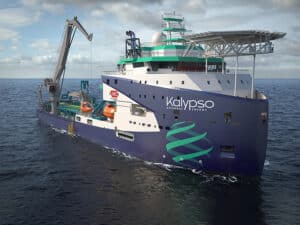
Thoma-Sea orders Vestdavit systems for NOAA newbuilds
Written by Nick Blenkey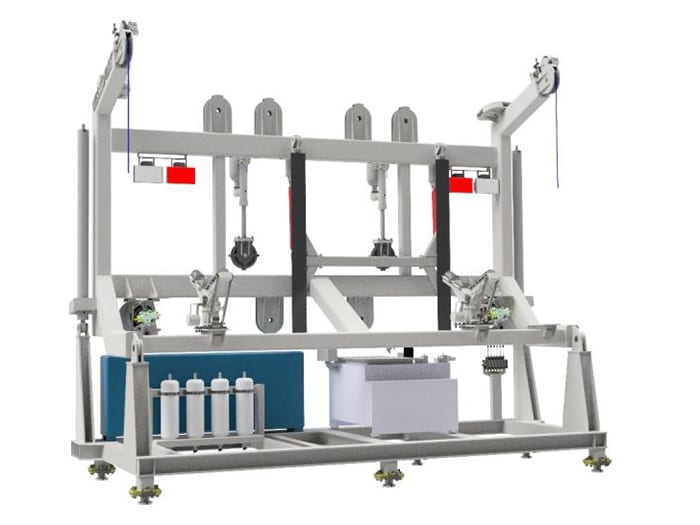
Vestdavit´s HN-5000 workboat davit that will be installed on NOAA ships is designed for robustness and reliability.[Image: Vestdavit]
Houma, La, shipbuilder Thoma-Sea Marine Constructors has awarded Laksevåg, Norway, headquartered Vestdavit a contract to supply one of its HN-5000 workboat davits for each of two NOAA vessels — Oceanographer and Discoverer — currently on order at the shipyard.
“The latest order represents a continuation of our strong relationship with the NOAA, which is one of the most important customers for Vestdavit. All of the dual-point davits in the NOAA fleet are currently Vestdavit systems,” says Magnus Oding, general manager of U.S. subsidiary Vestdavit Inc.
The HN-5000 davits, due for delivery in mid-2023, are designed for the reliable launch and recovery, in variable sea states, of workboats that will be used to carry out diverse missions ranging from general oceanographic research and exploration to marine life, climate and ocean ecosystem studies.
The Oceanographer and Discoverer, each with a 20-strong crew and accommodations for up to 28 scientists onboard, will also be required to perform maintenance on buoys and moorings, deploy scientific instruments to collect weather and water column data, and conduct seafloor mapping surveys.
Survey and data collection work will entail operations in different marine environments across the globe spanning shallow coastal and continental shelf waters to deep ocean conditions.
“NOAA is an organization that launches boats on a daily basis when carrying out missions,” says Oding. “This is a very good fit for us, since we focus on organizations that use their davits frequently and will need robust systems that can safely be used even in rough weather,” Oding explains.
ADVANCED FEATURES
The high-specifications of the HN-5000 make it well-suited to the operating requirements of challenging ocean conditions, enabling workboats to be safely launched and recovered in very rough weather.
The davit system incorporates motion compensation and safety features such as independent dual winches with independent constant tension, shock absorbers, guide arms and a programmable logic controller (PLC) for digital remote control.
Independent dual winches can operate separately or synchronized, and each winch can independently provide constant tension, which, says Oding is “a really advantageous feature when recovering boats in really rough weather.”
Shock absorbers, with one for each wire fall, remove 80% of peak loads to ensure a smoother ride for the crew of the workboat while guide arms serve as anti-pendulation devices that follow and stabilise the boat during davit in/out operation.
The PLC allows for pre-programmed motion sequences, which enables the davit operator to focus on the small boat and crew.
OPERATIONAL FLEXIBILITY
The self-contained davit is skid-mounted. This makes it easy to install on the deck of the vessel at the shipyard. It also allows for operational flexibility, as the skid is adaptable with locks for mounting of an ISO container instead of the davit if required for specific scientific missions.
The Oceanographer, which will have Honolulu as its home port, and Discoverer, to be homeported at Rhode Island, mark a significant expansion of the NOAA fleet.
“These two vessels will be equipped with advanced technology for scientific research but also require reliable operating equipment to ensure the safety and efficiency of boat missions,” says Thoma-Sea project manager Mike Rowsey. “Vestdavit’s proven track record in this area has given us the confidence that its davit systems are fit to handle ocean challenges.”

